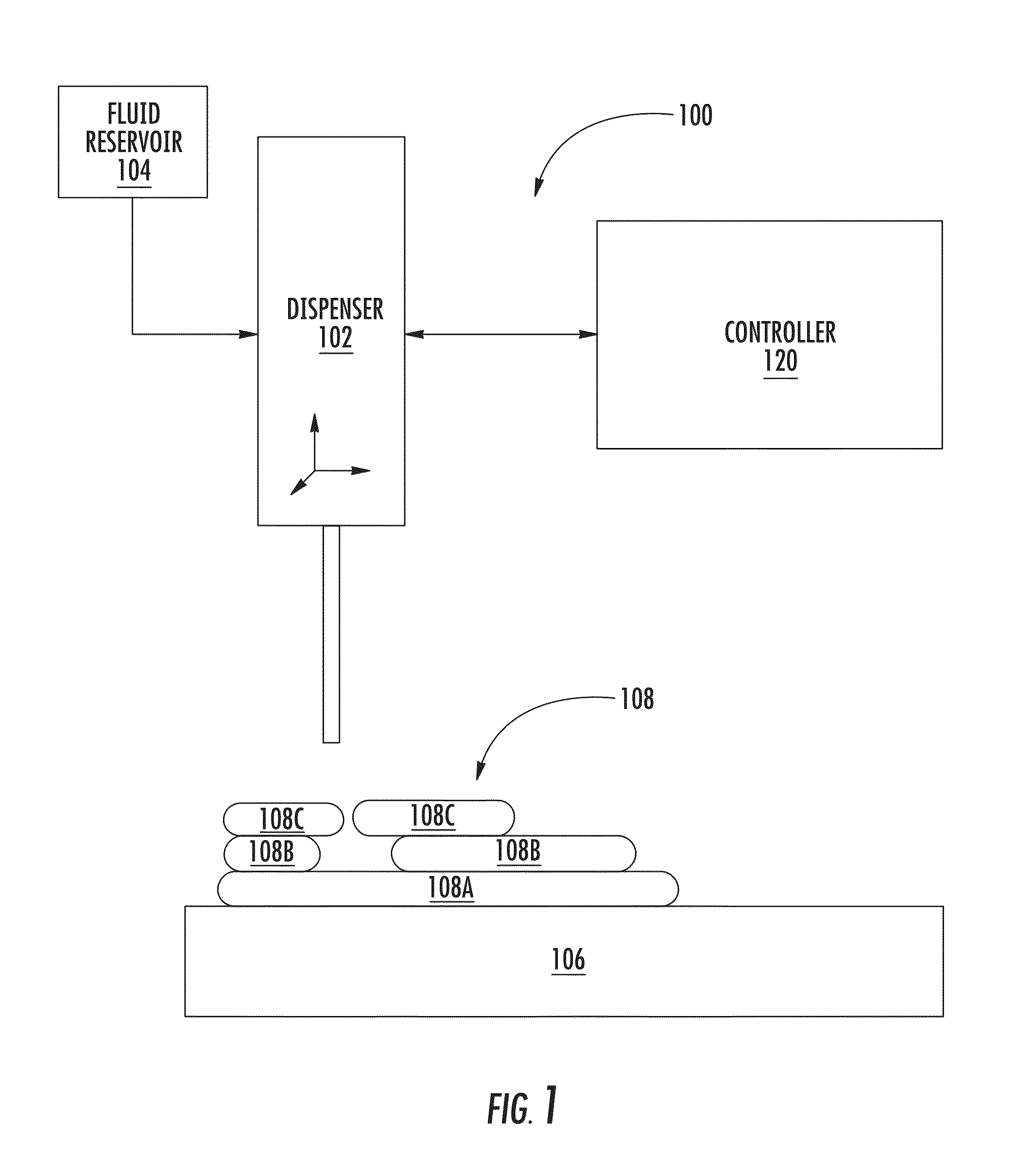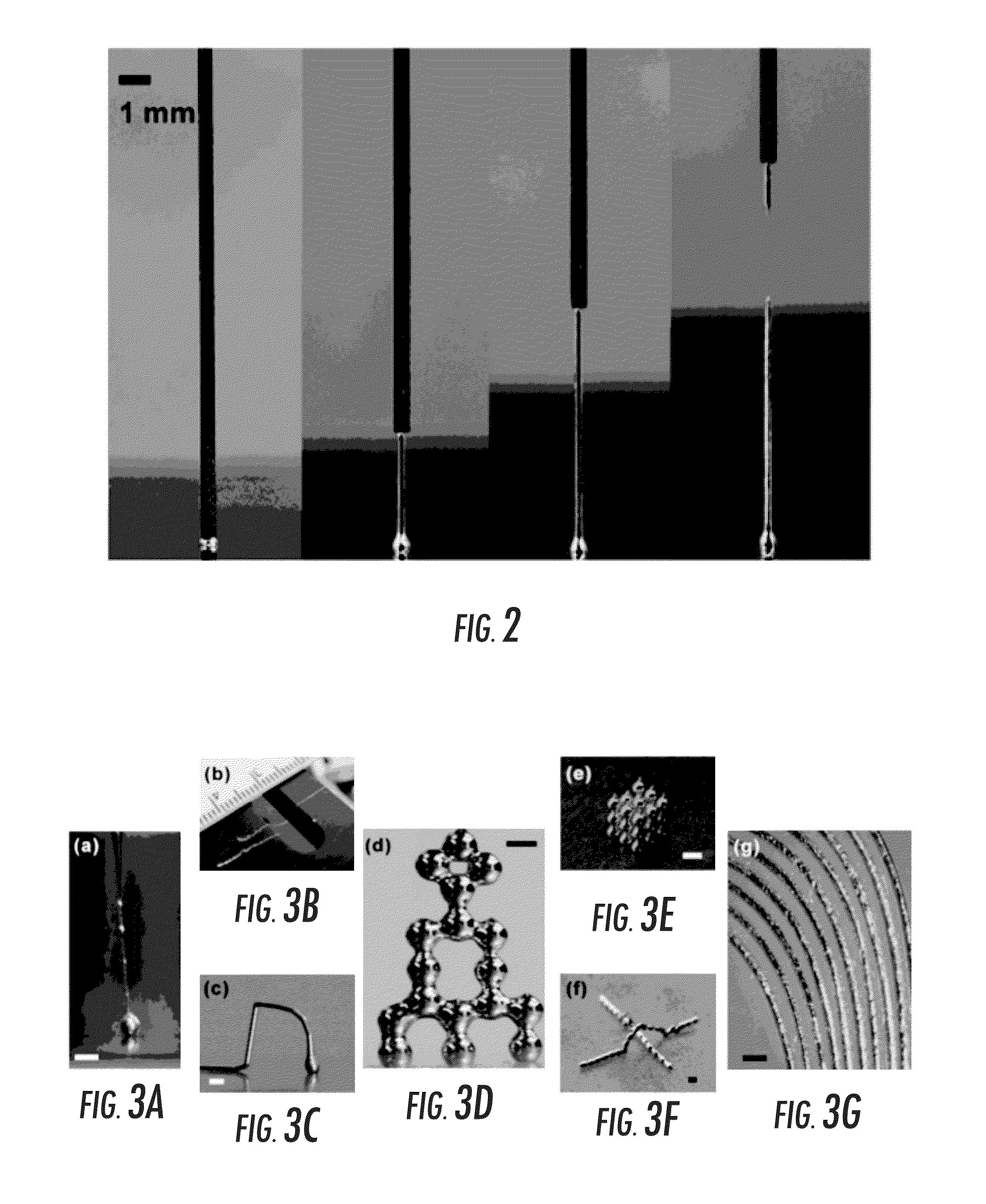Three-Dimensional Printing of Metallic Materials
a three-dimensional printing and metallic material technology, applied in the field of three-dimensional printing, can solve the problems of expensive laser writers or electron beam systems, parts with poor resolution, and difficult operation of instruments,
- Summary
- Abstract
- Description
- Claims
- Application Information
AI Technical Summary
Benefits of technology
Problems solved by technology
Method used
Image
Examples
Embodiment Construction
[0006]In some embodiments, methods of printing metallic objects include providing parameters of an object for printing, and controlling a deposition of a fluid metallic material to form the object. At least an outer surface region of the fluid metallic material is converted to a solid region after deposition.
[0007]In some embodiments, controlling a deposition of the fluid metallic material comprises controlling a pressure and / or flow rate of the material while simultaneously controlling a deposition location of the material such that deposited material forms the object. Controlling a deposition of the fluid metallic material may include depositing a first portion of the material, and then depositing a second portion of the material on the first portion after an outer surface region of the first portion is converted to a solid region. Controlling a deposition of the fluid metallic material may include depositing a stream of the fluid metallic material from a nozzle. The object may in...
PUM
| Property | Measurement | Unit |
|---|---|---|
| diameter | aaaaa | aaaaa |
| temperatures | aaaaa | aaaaa |
| thick | aaaaa | aaaaa |
Abstract
Description
Claims
Application Information
 Login to View More
Login to View More - R&D
- Intellectual Property
- Life Sciences
- Materials
- Tech Scout
- Unparalleled Data Quality
- Higher Quality Content
- 60% Fewer Hallucinations
Browse by: Latest US Patents, China's latest patents, Technical Efficacy Thesaurus, Application Domain, Technology Topic, Popular Technical Reports.
© 2025 PatSnap. All rights reserved.Legal|Privacy policy|Modern Slavery Act Transparency Statement|Sitemap|About US| Contact US: help@patsnap.com



